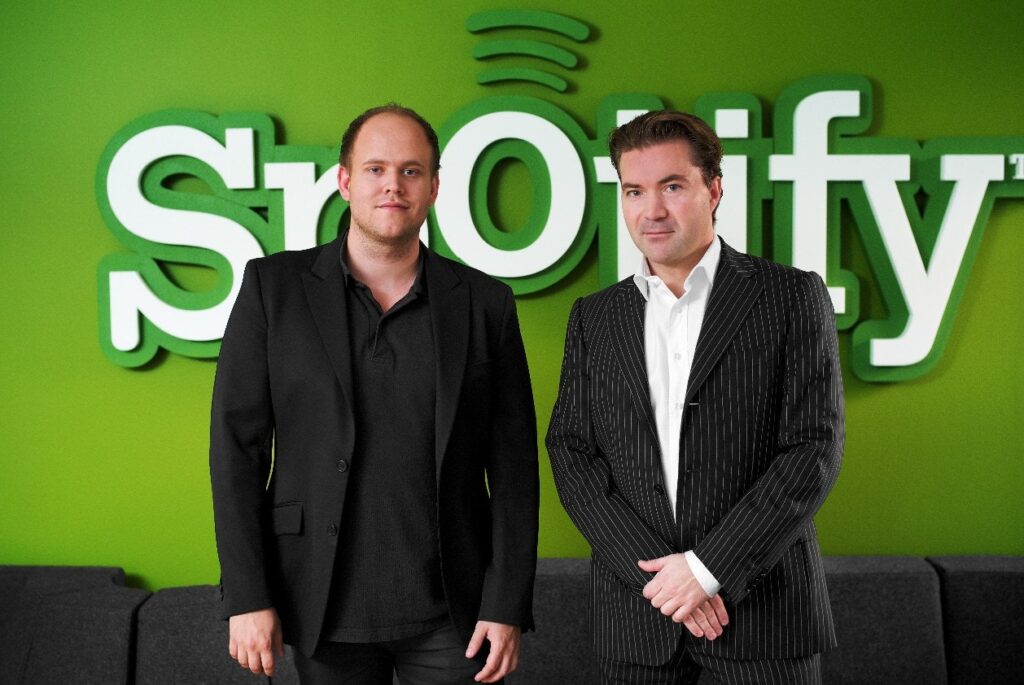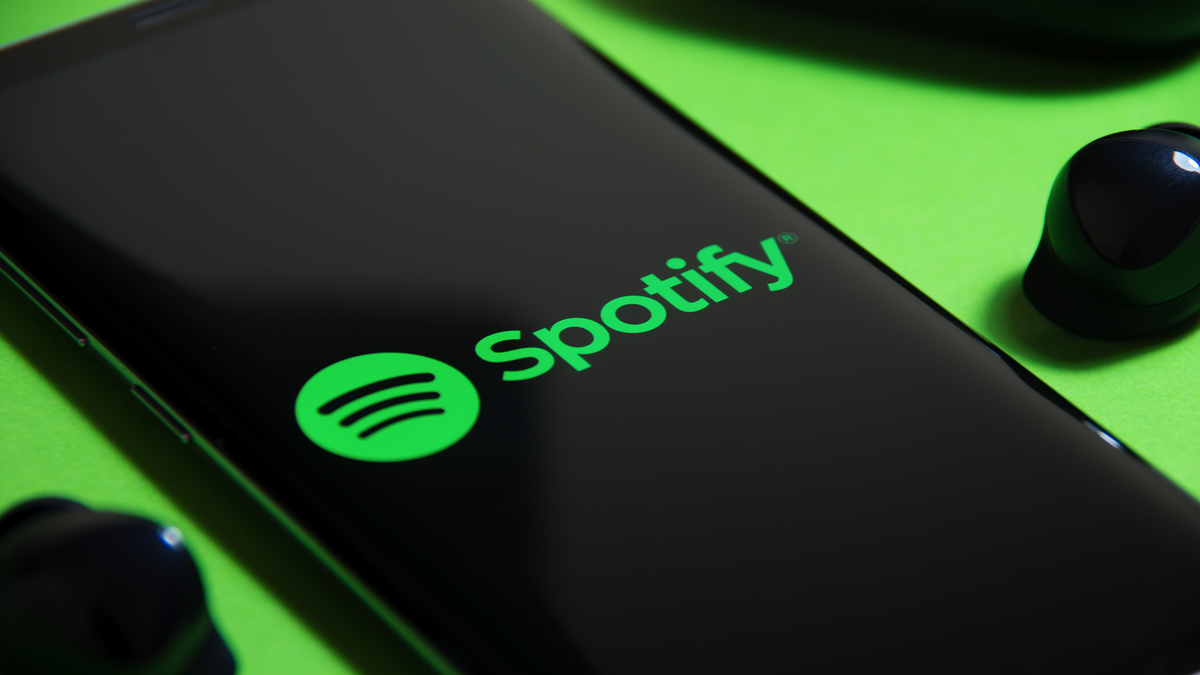Spotify is a digital music streaming service that allows users to access a vast library of music from various genres and artists. It was launched in 2008 and has since become one of the most popular music streaming platforms worldwide.
With Spotify, you can create personalized playlists, discover new music based on your preferences, and follow your favorite artists. The service offers both free and premium subscription options.
With a free account, you can listen to music on-demand with occasional advertisements, while the premium subscription removes the ads and provides additional features like offline listening, higher audio quality, and the ability to skip tracks. Spotify is available on various platforms, including desktop computers, smartphones, tablets, and smart speakers, making it accessible to users on the go.
In addition to music, Spotify also features podcasts and audio content from various creators, expanding its offerings beyond just music streaming. Users can explore a wide range of podcasts across different topics, follow their favorite podcasters, and even create their own podcasts through Spotify’s podcasting platform.
Founding History and Founders of Spotify
Spotify was founded by Daniel Ek and Martin Lorentzon in Stockholm, Sweden. The idea for the company came about in 2006 when Ek, a Swedish entrepreneur, and Lorentzon, a co-founder of TradeDoubler, a digital marketing company, realized the potential of creating a legal and convenient music streaming service.

The development of Spotify started in 2006, but it wasn’t until October 2008 that the service officially launched to the public. Initially, Spotify was available only to users in Sweden, but it quickly expanded its reach to other European countries. The service gained popularity due to its extensive music catalog and user-friendly interface.
One of the significant challenges Spotify faced in its early days was securing licensing agreements with record labels. Negotiations with major record labels took several years, as the music industry was initially skeptical about embracing streaming services. However, Spotify managed to secure agreements with various labels, enabling it to offer a vast library of music to its users.
As Spotify continued to grow, it expanded its operations to other countries, including the United Kingdom, France, Spain, and Germany. In 2011, Spotify ventured into the United States, a highly significant market for music consumption. Its launch in the U.S. was highly anticipated, and it gained a considerable number of users within a short period.
Over the years, Spotify introduced new features and enhancements to its service. It introduced a freemium model, where users could access music for free with advertisements or opt for a premium subscription to enjoy an ad-free experience and additional features. The premium subscription also offered offline listening and higher audio quality.
Spotify’s success can be attributed to its focus on user experience, personalized recommendations, and social integration. The platform implemented algorithms and machine learning techniques to analyze user listening habits and provide personalized music suggestions, enhancing the overall user experience.
In addition to music, Spotify recognized the rising popularity of podcasts and began incorporating them into its platform. In 2019, Spotify made significant investments in podcasting by acquiring podcast networks and exclusive rights to popular podcasts, aiming to become a leading platform for both music and podcasts.
In April 2018, Spotify went public through a direct listing on the New York Stock Exchange (NYSE). This move allowed the company to become a publicly traded company without issuing new shares or raising capital through an initial public offering (IPO).
Since its launch, Spotify has continued to expand its user base and global presence. It has introduced various subscription plans, including individual, family, and student plans, catering to different user segments. As of my knowledge cutoff in September 2021, Spotify had millions of active users worldwide and offered a catalog of millions of songs and podcasts.
Exploring the Business Model of Spotify: Disrupting the Music Industry
In the digital age, the way we consume music has undergone a significant transformation, and at the forefront of this revolution is Spotify. With its vast music library, personalized recommendations, and user-friendly interface, Spotify has emerged as one of the leading music streaming platforms globally. In this part, we delve into the business model of Spotify, examining how it operates and disrupts the traditional music industry.
Freemium Model: At the core of Spotify’s business model is the freemium model, which offers users two options: free access with advertisements or a premium subscription. The free tier allows users to stream music on-demand, albeit with intermittent advertisements. This approach attracts a large user base, driving engagement and introducing users to the platform. The premium subscription removes ads and unlocks additional features, such as offline listening, higher audio quality, and unlimited skips.
Also Read: Freemium Business Model And How It Works?
Licensing Agreements: One of the key challenges Spotify faced in its early days was securing licensing agreements with record labels. Negotiations with major record labels were complex and time-consuming, as the music industry was initially hesitant to embrace streaming services. However, Spotify persevered and managed to strike deals with various labels, allowing it to access an extensive music catalog. These licensing agreements involve revenue-sharing arrangements, ensuring artists and rights holders receive compensation for their music.
Personalized Recommendations: Spotify’s success lies in its ability to provide personalized music recommendations. Leveraging algorithms and machine learning techniques, the platform analyzes user listening habits, playlists, and preferences to curate customized recommendations. By understanding individual tastes and behaviors, Spotify enhances the user experience, making it easier for listeners to discover new music that aligns with their interests.
Social Integration and User Engagement: Spotify places a strong emphasis on social integration and user engagement. Users can follow friends, artists, and influencers, creating a social network within the platform. This social aspect enables users to share and discover music through collaborative playlists, public playlists, and the “Discover Weekly” feature, which suggests personalized playlists based on user preferences. By fostering social connections and interactions, Spotify enhances user engagement and cultivates a sense of community.
Expansion into Podcasting: Recognizing the surging popularity of podcasts, Spotify strategically expanded its offerings beyond music. The company invested heavily in podcasting, acquiring podcast networks and securing exclusive rights to popular shows. This aggressive move aims to position Spotify as a leading platform for both music and podcasts. By integrating podcasts into its ecosystem, Spotify diversifies its content, attracts new users, and keeps existing users engaged for longer periods.
Ad Revenue and Premium Subscriptions: Spotify generates revenue through a combination of advertising and premium subscriptions. The free tier features advertisements, allowing Spotify to monetize its vast user base. Advertisers can target specific demographics and reach engaged listeners, making Spotify an attractive platform for brands. Premium subscriptions, on the other hand, provide a steady source of revenue from users willing to pay for an ad-free experience and additional features. The success of this dual revenue stream model has enabled Spotify to navigate the competitive streaming market and invest in further growth.
Spotify’s disruptive business model has reshaped the music industry, offering users a convenient and personalized way to access music. Its freemium model, licensing agreements, personalized recommendations, social integration, and expansion into podcasting have been instrumental in its success. By continuously innovating and adapting to evolving user preferences, Spotify has carved a niche in the streaming market and established itself as a global leader, transforming the way we enjoy music in the digital age.
Unraveling Spotify’s Revenue Streams: A Multifaceted Business Model
As one of the most prominent players in the music streaming industry, Spotify has not only revolutionized how we consume music but also devised a robust business model to generate revenue. In this part, we delve into the various revenue streams of Spotify, exploring how the company monetizes its platform and sustains its operations.
Premium Subscriptions: The primary revenue stream for Spotify comes from premium subscriptions. Users can opt for a monthly subscription plan, paying a fee to access an ad-free experience, higher audio quality, offline listening, and other premium features. The subscription revenue provides a stable and predictable income for Spotify, allowing the company to invest in content acquisition, platform enhancements, and technological advancements.
Advertising: Spotify’s free tier relies on advertising as a significant revenue source. Advertisers can leverage the platform’s extensive user base to reach targeted audiences. Spotify offers various advertising formats, including audio ads that play between songs, video ads, display ads on the platform’s user interface, and sponsored playlists. By capitalizing on user engagement and data-driven ad targeting capabilities, Spotify generates revenue from brands looking to promote their products or services to a vast and diverse audience.
Artist and Label Partnerships: Spotify engages in partnerships with artists and record labels, providing opportunities for promotional activities and exclusive content releases. These partnerships often involve mutually beneficial arrangements, such as featured placements on curated playlists, promotional campaigns, and targeted marketing initiatives. In return, Spotify benefits from increased user engagement, attracting more listeners to the platform and generating revenue through increased streams and user retention.
Licensing and Distribution Deals: Securing licensing agreements with record labels and music publishers is crucial for Spotify’s operations. These agreements enable Spotify to legally stream music from a vast catalog of artists and albums. In exchange, Spotify pays licensing fees based on factors like the number of streams, the popularity of the content, and the country of origin. These licensing deals ensure that artists and rights holders receive royalties for their music, while Spotify gains access to a diverse range of music content to offer its users.
Partnerships with Brands and Merchandise: To further diversify its revenue streams, Spotify has entered into partnerships with brands and merchandising companies. This involves collaborations on branded playlists, sponsored events, limited-edition merchandise releases, and other co-branded initiatives. By leveraging its platform’s reach and the influence of popular artists and creators, Spotify capitalizes on brand partnerships to generate additional revenue and enhance the overall user experience.
Podcast Advertising: With its strategic expansion into podcasting, Spotify has tapped into the revenue potential of podcast advertising. The company has introduced targeted ad insertion capabilities, allowing brands to reach podcast listeners with personalized and relevant advertisements. By leveraging its data-driven ad targeting algorithms, Spotify can offer advertisers a valuable platform to connect with engaged podcast audiences, generating revenue through podcast ad placements.
Spotify’s multifaceted business model encompasses a range of revenue streams, ensuring its financial sustainability and growth in the highly competitive music streaming industry. Through premium subscriptions, advertising, artist and label partnerships, licensing deals, brand collaborations, and podcast advertising, Spotify generates revenue from multiple sources. This diverse approach allows the company to continually invest in content acquisition, platform development, and innovative features while providing users with a compelling music streaming experience. As Spotify continues to evolve, its revenue streams will likely adapt to emerging trends and market dynamics, reinforcing its position as a leader in the digital music streaming landscape.
Website – Spotify
To read more content like this, subscribe to our newsletter



